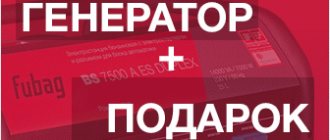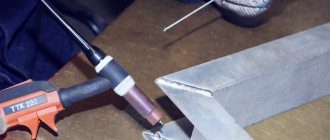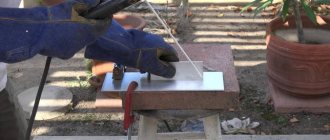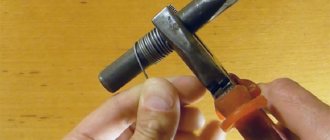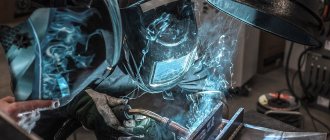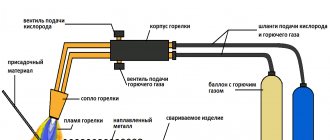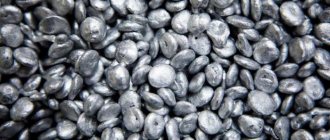Designations
| Name | Meaning |
| Designation GOST Cyrillic | AD00 |
| Designation GOST Latin | AD00 |
| Translit | AD00 |
| By chemical elements | — |
| Name | Meaning |
| Designation GOST Cyrillic | 1010 |
| Designation GOST Latin | 1010 |
| Translit | 1010 |
| By chemical elements | 1010 |
What about the sockets?
The cable is not used on its own. As a rule, in apartments it starts from the terminals of circuit breakers and zero buses, and ends at electrical installation products (EUI).
Most manufacturers of model equipment, even before the changes were released, indicated the possibility of connecting both copper and aluminum conductors to the contact terminals. But there was also a small clarification: contacts need to be extended every six months.
After the changes were released, EUI manufacturers quickly came to their senses and began producing sockets and switches with special terminals. It is also important that these terminals can easily accommodate a conductor with a cross-section of 4 mm2.
To make everything official, changes were made to GOST IEC 60884 for household sockets and GOST IEC 61545 for contact connections. For those who like to dig deep, I recommend checking it out.
Description
Aluminum AD00 is used : for the production of semi-finished products (sheets, strips, strips, plates, profiles, panels, rods, pipes, wire, stampings and forgings) by hot or cold deformation, ingots and slabs; pressed pipes with controlled internal diameter from 14 to 42 mm for heat exchangers.
Note
According to ISO 209−1, aluminum grade AD00 has the designations A199.7 and 1070A, aluminum grade AD00E (with guaranteed electrical characteristics) has the designations EA199.7 and 1370.
Aluminum sheet: varieties
Aluminum sheet is a common material that is actively used not only in aircraft construction, repair work, mechanical and instrument making, but also in the chemical and food industries, radio and electrical engineering.
The advantages of aluminum make it possible to produce a wide variety of products from this material. According to estimates by the International Aluminum Institute, there are about 400 million aluminum products in the world today. The useful properties of the material include:
- high strength;
- lightness - it is much lighter than other metals;
- resistance to corrosion;
- thinness - sheets made from it are thinner than from other metals;
- susceptibility to secondary processing.
Standards
| Name | Code | Standards |
| Ribbons | B54 | GOST 13726-97, OST 1-92006-79, TU 1-2-133-77 |
| Sheets and strips | B53 | GOST 17232-99, GOST 21631-76, OST 1-92045-75 |
| Pipes made of non-ferrous metals and alloys | B64 | GOST 18482-79, OST 4-021.129-78, OST 4.021.129-92, TU 1-3-041-91, TU 1-9-1057-80, TU 1-9-194-72, TU 1-9 -340-73, TU 1-3-67-90, TU 1-3-67-98 |
| Non-ferrous metals, including rare ones, and their alloys | B51 | GOST 4784-97, OST 4.021.009-92, TU 1-4-162-80 |
| Long and shaped rolled products | B52 | GOST 8617-81, GOST 13616-97, GOST 13617-97, GOST 13618-97, GOST 13619-97, GOST 13620-90, GOST 13621-90, GOST 13622-91, GOST 13623-90, GOST 13624-90, GOST 13737-90, GOST 13738-91, GOST 17575-90, GOST 17576-97, GOST 29296-92, GOST 29303-92, GOST R 50066-92, GOST R 50067-92, GOST R 50077-92, OST 1 92093-83 |
| Metal forming. Forgings | B03 | OST 26-01-152-82 |
| Rods | B55 | TU 1-2-253-78 |
anodized aluminum products
Anodized aluminum AluPlate from the Alyumatek company is intended for the manufacture of a range of industrial and advertising and information products using metal printing technologies and laser machines. These are nameplates. plates, instrument face panels, instrument scales, badges, number plates and other products made of aluminum. Thanks to the deep and uniform oxide layer, the dye applied digitally using metal printing printers penetrates well into the top layer of aluminum, resulting in a bright and stable image with a durability guarantee of up to 20 years. And high-quality metal coloring for engraving allows you to obtain products that meet the highest requirements of your customers.
signs
Production of metal signs for outdoor and indoor use
nameplates
Production of aluminum nameplates of various thicknesses, including self-adhesive ones
dashboards
Production of metal dashboards using laser cutting and milling technologies
Chemical composition
| Standard | Mn | Si | Fe | Cu | Al | Ti | Zn | Mg |
| GOST 4784-97 | ≤0.03 | ≤0.2 | ≤0.25 | ≤0.03 | ≥99.7 | ≤0.03 | ≤0.07 | ≤0.03 |
Al is the base. According to GOST 4784-97, the mass fraction of other impurities is ≤ 0.03% each, the total mass fraction of all impurities is ≤ 0.30%. For aluminum grade AD00E (with guaranteed electrical characteristics), the mass fractions of impurities are set to: silicon ≤ 0.10%, copper ≤ 0.020%, manganese ≤ 0.010%, magnesium ≤ 0.020%, chromium ≤ 0.010%, iron ≤ 0.25%, zinc ≤ 0.040%, boron ≤ 0.020, titanium + vanadium ≤ 0.020%.
Types of anodizing
The QUALANOD organization divides aluminum anodizing into four main types with different requirements for their characteristics and properties:
- architectural (construction) anodizing
- decorative anodizing
- industrial anodizing
- hard anodizing.
Anodic coatings are divided into classes according to their thickness:
- minimum permissible average thickness and
- minimum permissible local thickness.
For example, class AA20 means that the average coating thickness must be at least 20 micrometers. The minimum local coating thickness should generally be at least 80% of the minimum average thickness. For class AA20 this is 16 microns.
Architectural anodizing
This is anodizing for the production of architectural finishing of products that are constantly exposed to outdoor conditions and in a stationary state. The most important characteristics of an anodized product are appearance and long service life.
For anodized aluminum, the degree of protection against pitting corrosion of aluminum increases with increasing thickness of the anodic coating. Consequently, the service life of architectural or building elements largely depends on the thickness of the anodic coating. However, obtaining a thicker anodic coating requires significantly more electrical energy. Therefore, so-called “re-anodizing” is not recommended.
Architectural anodizing has the following classes:
- AA10
- AA15
- AA20
- AA25
The choice of anodic coating thickness for external aluminum structures depends on the aggressiveness of the atmosphere and is usually specified in national regulations. In addition, the use of some colorants requires a thickness grade of 20 microns or higher. This is necessary to achieve good filling of the pores with the dye and increased resistance of the painted coating to sunlight.
Decorative
This type of aluminum anodizing is intended for the production of decorative finishing products. The main criterion for quality is a uniform or aesthetically pleasing appearance.
Decorative anodizing has the following standard thickness classes:
- AA03
- AA05
- AA10
- AA15
Industrial and solid
Industrial anodizing of aluminum is used to produce functional surface finishes for products when appearance is a secondary characteristic. The purpose of hard anodizing is to obtain a coating with high wear resistance or high microhardness.
Very often, for example in the automotive industry or medical equipment, the appearance of the product is not important, but the most important characteristic is resistance to wear and/or ability to be effectively cleaned and have high hygiene requirements. In such cases, it is these properties of anodized aluminum that are most important.
If the main property is high wear resistance, a special type of anodizing is used - hard anodizing. It is produced at low, often negative, electrolyte temperatures
Industrial and hard anodic coating thicknesses typically range from 15 to 150 microns. Threads and splines can be coated up to 25 microns. To obtain high electrical insulation, an anodic coating thickness of 15 to 80 µm is often required. Coatings with a thickness of 150 microns are used for repairing parts.
Mechanical characteristics
| Section, mm | sТ|s0.2, MPa | σB, MPa | d5, % | d10 |
| Tape in delivery condition according to OST 1-92006-79 | ||||
| 5-10.5 | — | ≥68.6 | — | ≥15 |
| 0.25-0.5 | — | ≥58.8 | — | ≥20 |
| 0.5-0.9 | — | ≥58.8 | — | ≥25 |
| 0.9-10.5 | — | ≥58.8 | — | ≥28 |
| 0.25-0.8 | — | ≥147.7 | — | ≥3 |
| 0.8-3.5 | — | ≥147.7 | — | ≥4 |
| 3.5-4 | — | ≥147.4 | — | ≥5 |
| Rolled sheets in delivery condition in accordance with GOST 21631-76, OST 4.021.047-92 and strips in accordance with GOST 13726-97 (transverse samples) | ||||
| 5-10.5 | — | ≥70 | — | ≥15 |
| 0.3-0.5 | — | ≥60 | — | ≥20 |
| 0.5-0.9 | — | ≥60 | — | ≥25 |
| 0.9-10.5 | — | ≥60 | — | ≥30 |
| 0.3-0.8 | — | ≥145 | — | ≥3 |
| 0.8-3.5 | — | ≥145 | — | ≥4 |
| 3.5-10.5 | — | ≥130 | — | ≥5 |
| 0.8-4.5 | — | ≥100 | — | ≥6 |
| Plates in accordance with GOST 17232-99, OST 4.021.061-92 in delivery condition without heat treatment (transverse samples) | ||||
| 11-25 | — | ≥78 | ≥18 | — |
| 25-80 | — | ≥64 | ≥15 | — |
| Forgings after annealing according to OST 26-01-152-82 | ||||
| ≥20 | ≥60 | ≥25 | — | |
| Pressed aluminum pipes with controlled internal diameter for heat exchangers in the delivered condition without heat treatment according to TU 1-3-67-90 (the internal diameter of the pipes is indicated in the cross-section | ||||
| 14-42 | — | 59-98 | — | ≥28 |
| Pressed pipes as delivered according to GOST 18482-79 (samples, wall thickness indicated in cross-section) | ||||
| — | ≥60 | — | ≥20 | |
| Seamless drawn pipes of rectangular section in delivery condition according to OST 4.021.129-92, TU 1-9-194-72 | ||||
| — | ≥58.8 | — | ≥12 | |
Application of aluminum and its alloys in the electrical industry
Aluminum and a number of its alloys are widely used in electrical engineering due to its:
- high electrical conductivity;
- corrosion resistance;
- low density;
- good workability under pressure;
- decorative appearance;
- lower cost compared to more expensive copper and its conductor alloys.
The electrical industry is the largest consumer of aluminum. The global share of its consumption is 18% of the total amount of aluminum. The most widespread use of aluminum is in the cable industry, which currently accounts for about 90% of all aluminum consumed in electrical engineering.
Depending on the electrical resistivity value, aluminum electrical alloys are divided as follows:
- conductor alloys;
- alloys with increased electrical resistance.
Conductor alloys
The specific electrical conductivity of electrical aluminum (A7E, A5E) according to the international standard is 60-62% of the conductivity of annealed copper. Technical aluminum (ADO) and electrical aluminum (mainly A5E) are widely used for the manufacture of wires, cables, cords, busbars, profiles and pipes for various electrical purposes.
The most widely used in electrical engineering are low-alloy alloys of the Al-Mg-Si system: AD31, AD31E and their analogues (AVE, 01327, AE1/AE2). Aluminum-based alloys are also known, tested in industrial and semi-industrial conditions. These are mainly alloys of the Al-Fe-B(Ni), Al-REM, Al-Mg(Cu), Al-Zr, Al-Si systems (01017, 01417, 01527, 01117, etc.).
With a lower conductivity (56-59% of annealed copper), aluminum conductor alloys serve primarily the same purpose as electrical aluminum and are used when higher strength, thermal stability, creep resistance, and other special requirements are needed.
Alloys AD31, AD31E are used to make tires, profiles and pipes used for various electrical products; AD31E alloy provides higher conductivity than AD31 alloy with approximately the same level of mechanical properties. Alloys of more limited use are for on-board wires, communication cables, integrated circuit microwires, and other special electrical applications. These are mainly low-alloy alloys of the systems mentioned above, as well as Al-Mg-Zn, Al-Cu, etc. All alloying elements and impurities included in aluminum conductor alloys, according to the degree of reduction in the electrical conductivity of annealed aluminum, are divided into two groups:
1. Elements that slightly reduce conductivity at a content of 0.1–0.2% (atomic): Zn, Ni, Si, Cu, Mo, Ca, Fe, Mg, W (y > 35 MSm m-1);
2. Elements that significantly reduce conductivity: Cr, Li, Mn, Ti, Be, Zr (y < 34 MSm m-1).
Microalloying of conductor alloys with surfactant additives such as boron helps to reduce the electrical resistivity of aluminum alloys in certain temperature ranges and increase ductility. It is believed that small boron atoms (0.09 nm) form insoluble borides of chromium and zirconium and, by removing them from the solid solution and from the alloy, suppress the harmful effects of titanium, manganese and vanadium, and increase the conductivity of electrical products made from them. In recent years, aluminum conductor alloys have become more widely used for overhead wires and communication cables (mainly AD31E, AVE alloys). The high strength of wires made of aluminum alloys allows you to increase the size of power line spans and helps reduce the amount of damage during installation. In terms of resistance to the action of an arc that occurs during a short circuit, wires made of aluminum alloys occupy second place after copper and are much more resistant than aluminum wires. The cost of aluminum wire in power lines is 1/2 to 1/3 the cost of copper wire of equal conductivity. Today, the list of main uses of aluminum and aluminum alloys in the electrical industry is very wide:
- ¾ steel-aluminum wires for voltages up to 750 kV, intended for the transmission of electrical energy in overhead electrical lines and on electrified transport lines;
- ¾ high-voltage (1-35 kV) and ultra-high voltage (up to 500 kV) power cables with aluminum cores and sheaths;
- ¾ communication cables of various types and purposes;
- ¾ transformers up to 70 thousand kW;
- ¾ electric motors up to 1000 kW and more;
- ¾ electric drives;
- ¾ electric battery housing;
- ¾ charging stations for electric vehicles;
- ¾ busbars;
- ¾ wires for operation at elevated temperatures;
- ¾ bimetallic aluminum-copper installation wires and cores for control and radio frequency cables;
- ¾ various electrical and lighting fittings.
The range of semi-finished products used in these electrical products is very diverse:
- rectangular (section 1.8÷7.7×4.1×18 mm) and round wire with a diameter from 0.08 mm to micron sizes in fiber, enamel-fiber and plastic insulation, oxidized or unprotected;
- cable sheaths with a diameter of 10-100 mm of unlimited length; single-wire sector conductors with a cross-section of 50–240 mm2, shaped and rectangular busbars up to 380 mm wide;
- sheets, foil, bimetals; cast parts, mainly from various aluminum alloys.
In addition to special conductor alloys, low- and medium-alloy wrought aluminum alloys with conductivity below 30–32 MSm m-1 are used in electrical and lighting engineering. The AD31 alloy is most widely used; in some cases, alloys 1320, 1915, 1925 (1955), etc. are used. Alloy 1320 of the Al-Mg-Si system is closest in properties to the AD31 alloy, superior to the latter in terms of strength and fluidity, corrosion properties, and quality surfaces after pressing, inferior in electrical conductivity. Most of the above alloys are used to produce various pressed semi-finished products for electrical purposes. Profiles made of these alloys are as close in cross-section as possible to certain parts of electrical products. In addition, extruded profiles are used for the manufacture of:
- electric motor housings;
- various devices;
- racks;
- stiffeners;
- boards to which parts are attached;
- radiators and coolers for semiconductor devices directly or instead of rolled steel and copper, aluminum and copper casting.
Heat treatment of aluminum alloys used in electrical engineering can significantly change the characteristics of electrical conductivity. Thus, hardening of AD31E, AD31, 1320 alloys can be carried out in a wide temperature range: from 490 to 565 °C, preferably at 525 °C in cold water. Aging is artificial according to a unified regime: 165 °C, exposure for 12 hours or at 140-180 °C, 12-2 hours, depending on the requirements for the mechanical properties and electrical conductivity of parts. Thermo-mechanical processing makes it possible to obtain wire from the AD31E alloy and its analogues with high values of electrical conductivity and strength characteristics at the same time. The most common is low-temperature thermomechanical processing (LTMT) according to the following technological scheme: hardening of coils of wire rod from 525-565 °C in water with a temperature of 20 °C, drawing during natural aging with a degree of deformation of more than 80%; artificial aging at 140–180 °C for 16–20 hours. The use of TMT is possible in the production of wire rod from aluminum alloys using a continuous method. To do this, it is necessary to carry out wire drawing immediately after rolling the wire rod with regulation of the rolling speeds and cooling of the workpiece. New technology for producing wire and semi-finished products from granules and in the form of composite materials makes it possible to obtain materials with special physical, mechanical and other properties, which opens up the prospect of creating fundamentally new designs and technological solutions in electrical engineering. An example is bimetallic wire aluminum (aluminum alloy) - copper, which makes it possible to produce wires that are twice as light as copper and have conductivity at the level of electrical copper. The same advantages make it possible to obtain aluminum-carbon and aluminum-copper laminated tapes, sheets, and plates.
In electrical engineering, there are three sectors where copper and aluminum compete with each other:
- ¾ low and medium voltage cables;
- ¾ transformers;
- ¾ power bus.
For cable products, you need to decide what is more important: cable cross-section or greater weight? Aluminum cable will be cheaper than copper, however, copper is more technologically advanced for various design solutions and is less problematic when used in contact connections. Recently, copper-aluminum cables have appeared, which has made it possible to reconcile competitors in electrical conductivity: copper and aluminum.
The use of aluminum in transformers instead of copper allows for significant weight savings. The difference in production costs of copper and aluminum transformers compensate for each other and, according to manufacturers, the choice of material is primarily a matter of company ideology.
The requirements for power buses are dictated, first of all, by the overall dimensions of the corresponding structures. A large amount of conductive material and a small amount of insulating material in a small space is what power busbars are. Therefore, the price difference comes to the fore. A large number of electrical connections within a small space means potential connection problems with aluminum. And when all design decisions are taken into account, the question of choosing a material becomes almost philosophical. If price is chosen as a criterion, then aluminum is preferable. In order to improve electrical conductivity, copper can be applied to aluminum contacts in various ways. Aluminum and copper conductors are typically plated with silver or tin. Chemical plants, oil and gas fields, oil and gas refineries, and steel mills may contain corrosive gases such as hydrogen sulfide. Aluminum is resistant to hydrogen sulfide environments, and copper contacts require tin plating.
(Based on materials from domestic and foreign press)
Conclusions: Cautious
It is not entirely clear to me how the reliability and safety of electrical wiring increases, as stated in the orders. It is unlikely that new alloys surpass classic GOST copper in their parameters. It is not clear how reliability will increase.
Since, with all identical parameters, the cross-section of the core and the diameter of the cable will be increased, this will complicate the life of the electrician - after all, connecting and laying cables will be difficult. There is no doubt that ordinary hard workers who will need to master new technologies will spit at first.
Personally, I am not against business and technology development. The main thing is that the use of 8xxx aluminum alloys really gives the advantages that are stated - low price, safety and reliability.
Wait and see!
